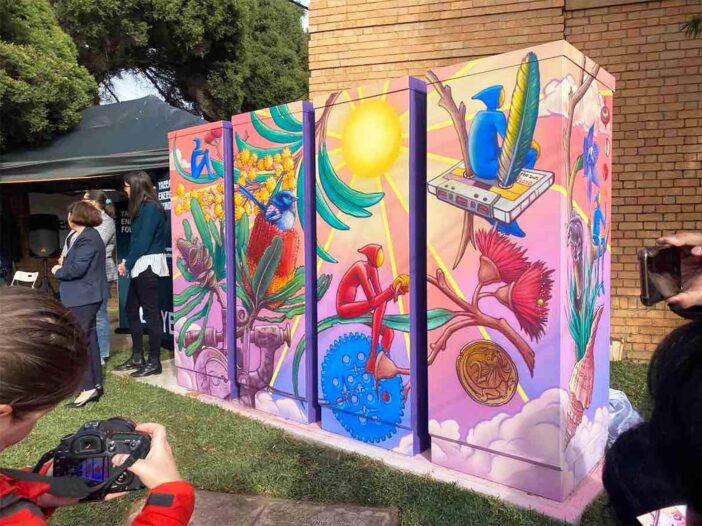
A recent report on community batteries by the not-for-profit, volunteer-led community energy group, Zero Emissions Noosa (ZEN), acknowledges that medium sized storage batteries aren’t currently financially viable without a government grant.
However, one of the report’s authors, Vivienne Griffin has told the SwitchedOn podcast that community batteries can still make a vital contribution to the energy transition.
“We shouldn’t leave the distribution of community batteries only to DNSPs [Distribution Network Service Providers].” DNSPs are the companies that own and operate the power lines and poles that deliver electricity to homes and businesses.
ZEN’s report provides a business case and a roadmap for community groups and non-DNSPs considering installing a community battery.
“Community batteries can provide quick and flexible responses, without the social licence, high costs and delivery blow-outs that we are seeing with transmission scale options.”
In October 2022 the Federal government through ARENA allocated $200 million to fund the installation of 400 community batteries across Australia. Most of these grants have gone to DNSPs.
Noosa Council was the only non-DNSP in Queensland to receive a federal grant and are now working closely with ZEN to install a community battery in the Noosa shire.
ZEN believes that non-DNSP owners and operators of community batteries, particularly local government, should be key participants in the energy transition.
“Local governments are more likely to have the trust of their communities to facilitate the maximum reach and speed of community battery installations.”
Like all batteries regardless of size community batteries provide storage for renewable energy to be used in peak evening demand periods. Community batteries also allow for the integration of more rooftop solar installations.
However, ZEN’s report highlights a major obstacle hindering non-DNSPs that want to operate a community battery – punitive storage tariffs.
It found the proposed storage tariffs that will be charged for community batteries have “a hefty daily charge with rewards totally at the discretion of the DNSP, very much a disincentive for community batteries.”
Griffin says the proposed storage tariff proposed by Energex for the Noosa battery is currently being reviewed by the Australian Energy Regulator (AER).
“We are very disappointed with [Energex’s] proposal for community battery tariffs after 18 months of interaction.”
In addition to more favourable tariffs, Griffin says that if a value is placed on how much community batteries displace coal fired power in the evening from the energy system, they will become more financially viable.
She’s hopeful that as part of the National Energy Objective the federal government will implement a VER – a Value of Emissions Reduction – which will put a specific dollar value on the economic, environmental, and social benefits of reducing greenhouse gas emissions.
“If those factors start to come to play, then you might see the value stack [of community batteries] and the contribution to the financial scenario significantly improved.”
In addition to the financial and environmental benefits community batteries might be able to play in the future, ZEN also believes that community batteries play a vital role in educating local communities about energy.
“The more that people understand how to manage both energy production and consumption, rather than leaving it to amorphous bureaucracies, then the more informed electricity consumer we will get,” says Griffin.
Community and local groups also argue they are better placed to consult and collaborate with local communities about renewable energy projects like batteries, than the big utility companies that sometimes struggle for social licence.
“Where the community battery can contribute is through that flexibility, that speed of being able to be inserted into the energy transition ecosystem quickly”.
You can hear the full interview with Vivien Griffin on the SwitchedOn podcast.
Anne Delaney is the host of the SwitchedOn podcast and our Electrification Editor, She has had a successful career in journalism (the ABC and SBS), as a documentary film maker, and as an artist and sculptor.

